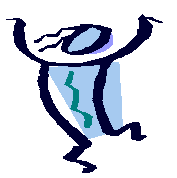 According to ancient Oriental medicinal practices, the entire body can be accessed from one point – the feet. This is how reflexology got started. How does it work to heal various ailments in the body?
According to ancient Oriental medicinal practices, the entire body can be accessed from one point – the feet. This is how reflexology got started. How does it work to heal various ailments in the body?
A map of the feet shows where on the foot the organs and nerves of the body are accessed. For instance, the ball of the foot provides access to the chest and the heart. The arch of the foot is used for the kidneys, pancreas and the liver. If you are having digestive problems, the heel of the foot accesses the intestines and the back. Using a reflexology map, other organs are more finely mapped out for the reflexologist to use.
Other ancient Chinese methods of treatment explain that the body is crossed with meridians just like on a globe. Each one is an energy line. When energy flows freely, the body is in harmony and healthy. When there is a problem in the body, one or more of these energy lines is being blocked. Reflexology uses the pressure applied to the feet to gain access to these energy areas and restore them.
Reflexology can be beneficial to a number of ailments. Everything from headaches, back pain, digestive troubles, depression, muscle tension and PMS has been helped with reflexology. There are no major side effects of the procedure. Due to restoration of the energy flow or ki (pronounced chee), some clients feel nauseous but it is only temporary.
While reflexology applies firm pressure to the feet it should not hurt in any way. Some areas that are connected to organs with major issues might feel tender or sore from the pressure. However, if you feel pain, communicate that to the reflexologist. To reduce friction, some therapists may use oils or lotions before applying pressure.
Since you are having therapy done on your feet, you might want to make sure they are not hot and sweaty before you go. The reflexologist will ask you to remove your shoes and socks before therapy commences but otherwise you remain fully clothed. The therapist will want you to be comfortable and in a position where there is as little tension in your muscles as possible. You may sit in a reclining chair or relax on a massage table.
Reflexology is not like a traditional massage so there are not as many precautions. However, anyone with blood clotting issues or pregnancy should consult their doctor first.
Reflexology is not a substitute for medical care for serious conditions. If, after reflexology, your condition persists, seek medical attention to rule out anything serious going on.
Reflexology is based on the premise that the feet allow access to the organs of the body along energy lines. Using the feet, health can be restored to the body wherever your pain may be. If you are shy, only your feet are uncovered for reflex massages.

Linda Andriacco,HHP, CCR is a Certified Clinical Reflexologist and Holistic Health Practitioner as well as Certified Laughter Yoga Leader. Linda owns and operates Reflexology & More.
To find out more about Reflexology or to schedule a session with Linda 937-623-3747.
